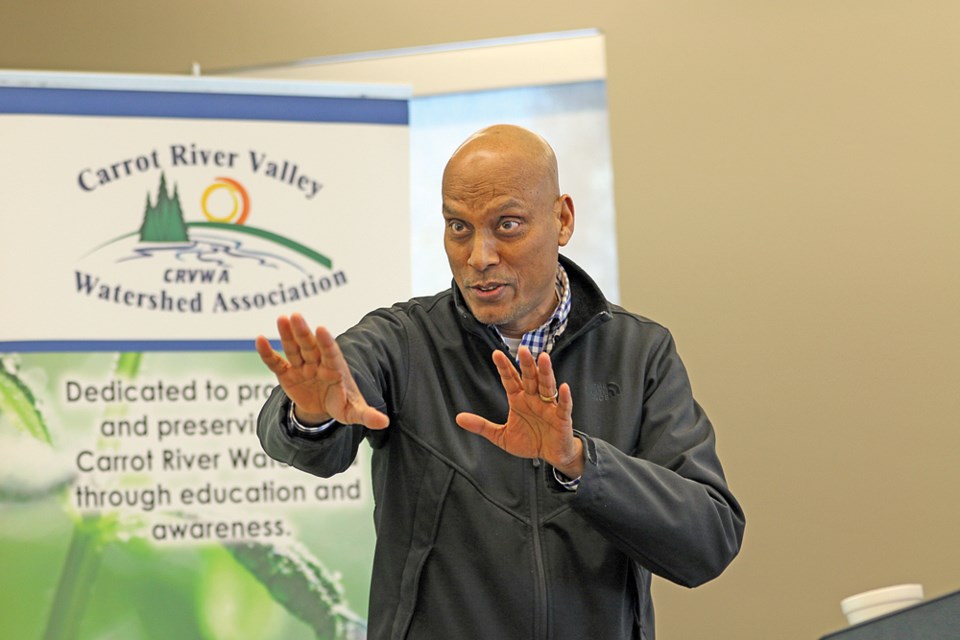The use of big data in agriculture could be a revolution that’s as big as the transition from subsistence agriculture to industrialized agriculture.
Shankar Das, a regional farm business management specialist from the Outlook Ministry of Agriculture office, spoke about the trend towards big data at the Carrot River Valley Watershed Association’s Tech in Ag Stewardship Workshop at Melfort’s Kerry Vickar Centre Jan. 25.
Big data is the use of large sets of data gathered by combines, sensors, drones, satellites and other items on the farm to reveal patterns and trends that can be used to improve farming practices.
Modern combines can have both a GPS and a sensor that determine how much crop the machine is gathering. Those two data points can then be combined to create a yield map of the field.
“That map could be used next year to, say, for how much fertilizer can be used, how much seed you’re going to use,” Das said.
Then farmers could use other data points to determine what they are doing that is making that portion of the field a success.
“For example, if you have land that goes up and down, knolls and ditches, the fertilizer and water will naturally go to the ditches. If you get more moisture, you’ll get more yield,” Das said. “But the knolls, the top of some of the bulges, you don’t want to spend a lot on fertilizer and things because it will be wasted.
“This is how we can reduce the costs: reduce the amount of inputs, fertilizers and everything, which will reduce the cost of production.”
Cattle could be placed in a pen that measures their weight and how much they eat. With that data, each head could then receive the exact amount of feed it needs, reducing waste. It could also detect early if a head is getting sick.
Performing gene crosses could be more efficient with big data. Instead of combining a few plants so that the changes can be noticeable to the farmer, more plants could be combined and the data processed by computer programs.
Using large datasets could improve food traceability, allowing consumers to make decisions in an unbiased manner.
“That’s why I think farmers should look at it,” Das said. “The industry, research organizations and some farmers, in the U.S. in particular, not in Saskatchewan, they see that there’s value in big data.”
At this point, using big data can be expensive, yet Das said he recommends farmers keep an eye on the technology and examine offerings from companies like John Deere, Farmer’s Business Network, Trimble and OnFarm.




